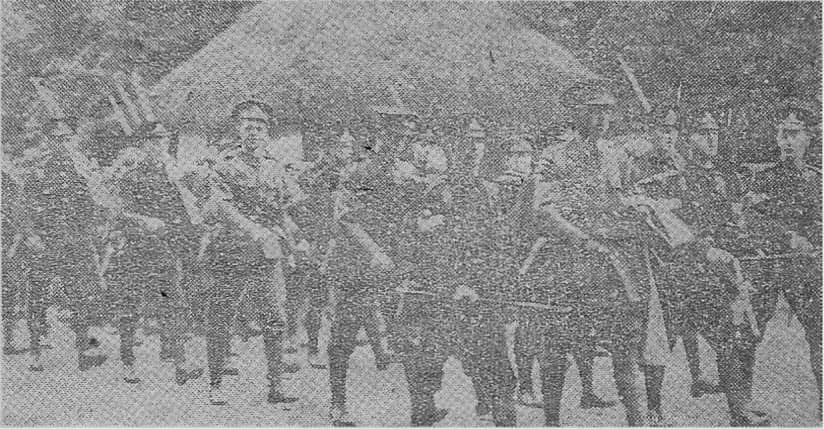
The Birmingham Pals began arriving in Sutton Park a few months after war had been declared in August 1914.
The secretary for war Lord Kitchener had launched a campaign of voluntary recruiting and these were the men from across Birmingham who had decided to join up.
Officially known as the Birmingham City Battalions of the Royal Warwickshire Regiment, they were to be trained in Sutton Park.
Sutton Town Council had agreed with the War Office that camps would be erected to accommodate these men whilst they undertook their training.
However, these camps had yet to be constructed and so the men were billeted across Sutton.
A small sum was paid to those residents who provided accommodation.
The men were instructed to remain in their billets from l0pm until 6am - and to make their own beds.
Work began on building the camps near Wyndley Gate and Holly Hurst in November 1914. Each hut was able to house 30 men.
They were finally ready in spring 1915. Meanwhile the men had begun training, getting fit first of all before practising formations, marching with their kits and digging trenches, which was reported to be 'not uninteresting work: -
Large crowds gathered to watch training.
When the soldiers played rugby or football - encouraged because they were learning to work together - 'the Sutton people ... collected in thousands to witness inter-battalion and other matches.’
Lectures
These volunteers also attended lectures at the Crystal Palace.
By February 1915 it was reported that the men were making 'excellent' progress in the use of the rifle.
The relocation of the three infantry battalions that made up the Birmingham Pals began that summer and they finally left for France in November 1915. Those who survived were later to organise reunion dinners at which 'songs of the old days at Sutton Park formed a conspicuous part of the subsequent sing-song:
For the rest of the war the camps were used to treat wounded and traumatised soldiers.
The huts were eventually sold at auction.
One of the larger huts was bought for £90 by a Catholic congregation in Saltley. It began a new life as a church in April 1921.
- George Dawson & his Circle:
The Civic Gospel in Victorian Birmingham (Merlin Press, 2021) is available.
Associate Professor
Stephen Roberts